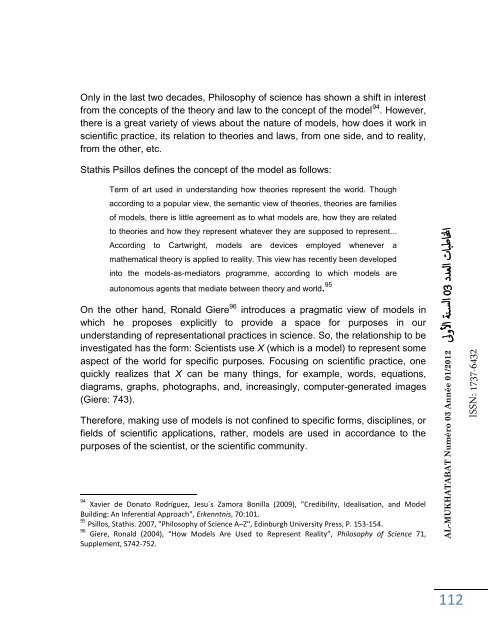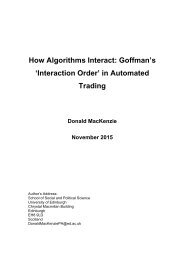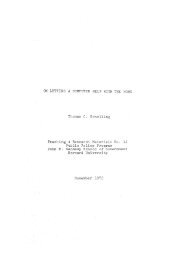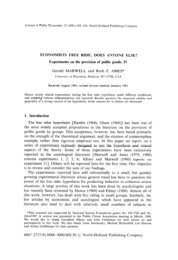n3-al-mukhatabat-journal
n3-al-mukhatabat-journal
n3-al-mukhatabat-journal
You also want an ePaper? Increase the reach of your titles
YUMPU automatically turns print PDFs into web optimized ePapers that Google loves.
Only in the last two decades, Philosophy of science has shown a shift in interest<br />
from the concepts of the theory and law to the concept of the model 94 . However,<br />
there is a great variety of views about the nature of models, how does it work in<br />
scientific practice, its relation to theories and laws, from one side, and to re<strong>al</strong>ity,<br />
from the other, etc.<br />
Stathis Psillos defines the concept of the model as follows:<br />
Term of art used in understanding how theories represent the world. Though<br />
according to a popular view, the semantic view of theories, theories are families<br />
of models, there is little agreement as to what models are, how they are related<br />
to theories and how they represent whatever they are supposed to represent...<br />
According to Cartwright, models are devices employed whenever a<br />
mathematic<strong>al</strong> theory is applied to re<strong>al</strong>ity. This view has recently been developed<br />
into the models-as-mediators programme, according to which models are<br />
autonomous agents that mediate between theory and world. 95<br />
On the other hand, Ron<strong>al</strong>d Giere 96 introduces a pragmatic view of models in<br />
which he proposes explicitly to provide a space for purposes in our<br />
understanding of representation<strong>al</strong> practices in science. So, the relationship to be<br />
investigated has the form: Scientists use X (which is a model) to represent some<br />
aspect of the world for specific purposes. Focusing on scientific practice, one<br />
quickly re<strong>al</strong>izes that X can be many things, for example, words, equations,<br />
diagrams, graphs, photographs, and, increasingly, computer-generated images<br />
(Giere: 743).<br />
Therefore, making use of models is not confined to specific forms, disciplines, or<br />
fields of scientific applications, rather, models are used in accordance to the<br />
purposes of the scientist, or the scientific community.<br />
94 Xavier de Donato Rodríguez, Jesu´s Zamora Bonilla (2009), "Credibility, Ide<strong>al</strong>isation, and Model<br />
Building: An Inferenti<strong>al</strong> Approach", Erkenntnis, 70:101.<br />
95 Psillos, Stathis. 2007, "Philosophy of Science A–Z", Edinburgh University Press, P. 153-154.<br />
96 Giere, Ron<strong>al</strong>d (2111), “How Models Are Used to Represent Re<strong>al</strong>ity”, Philosophy of Science 71,<br />
Supplement, S742-752.<br />
AL-MUKHATABAT Numéro 03 Année 01/2012 لىولأا ةن سلا 30 ددعلا تابطانا<br />
112<br />
ISSN: 1737-6432







